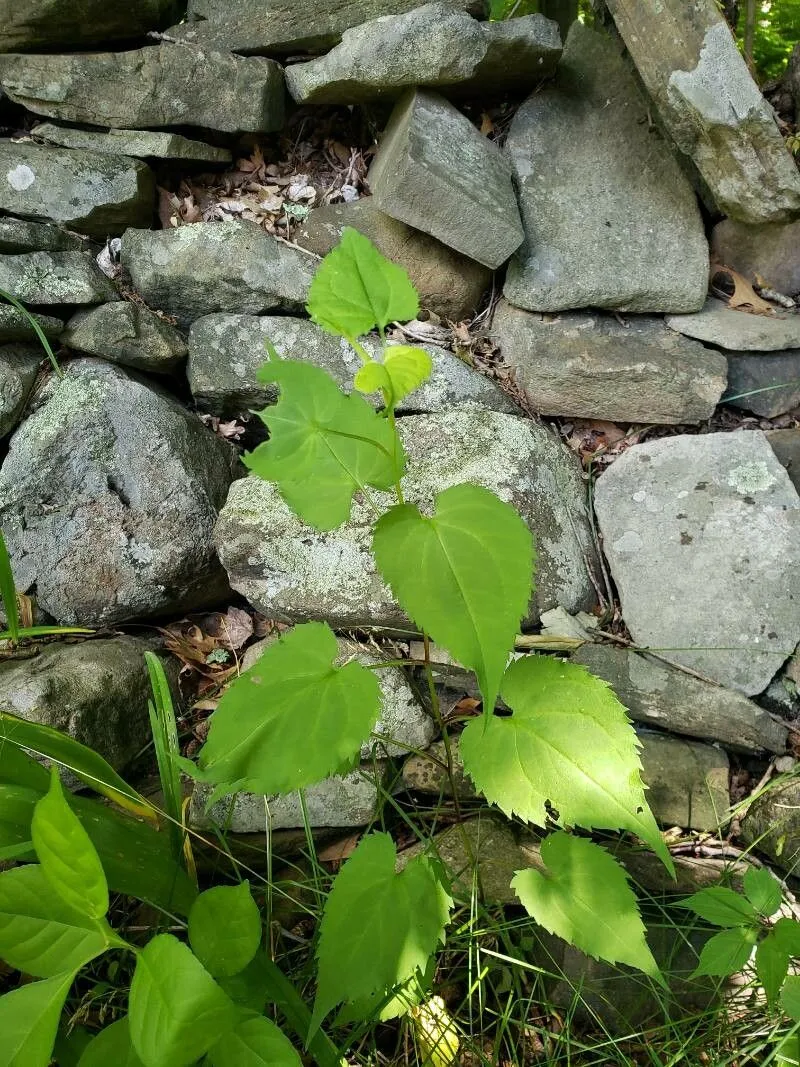
Author: L.
Bibliography: Sp. Pl.: 879 (1753)
Year: 1753
Status: accepted
Rank: species
Genus: Solidago
Vegetable: False
Observations: E. Canada to U.S.A.
Zig-zag goldenrod, scientifically known as Solidago flexicaulis, is a unique and attractive perennial plant belonging to the family Asteraceae. This species was first described by the renowned botanist Carl Linnaeus in his seminal work “Species Plantarum” in 1753, highlighting its historical significance and long-standing recognition in the field of botany.
Native to Eastern Canada and parts of the United States, the zig-zag goldenrod thrives in shaded woodland environments where it can take advantage of the rich, moist soils. Its common name is derived from its distinctive growth pattern; the plant’s stems characteristically zig and zag, creating an appealing and unusual appearance that sets it apart from other goldenrods.
Zig-zag goldenrod typically grows to a height of 1 to 3 feet, though its wiry, bent stems make it appear shorter in its natural understory habitat. The leaves of the plant are broad and coarsely toothed, with a rough, almost sandpaper-like texture. They are arranged alternately along the stem, contributing to the plant’s interesting zig-zag formation.
In the late summer to early fall, Solidago flexicaulis produces clusters of bright yellow flowers that form in small, tight panicles at the leaf axils and at the end of the stem. These blossoms are not only visually appealing but also play a crucial role in local ecosystems. The flowers attract a variety of pollinators, including bees, butterflies, and beetles, thus supporting biodiversity in the regions where the plant is native.
Ecologically, zig-zag goldenrod serves as an important species for maintaining healthy forest floors. Its shade tolerance allows it to persist and even thrive where many other sun-loving goldenrods cannot. This adaptability not only provides continuous ground cover but also helps in the prevention of soil erosion and the maintenance of soil fertility through the natural decay of its foliage.
Gardeners and plant enthusiasts value zig-zag goldenrod for its hardiness and decorative qualities. It is often used in shaded garden areas and woodland gardens, where its yellow blooms provide a pop of color in contrast to the predominantly green foliage of its surroundings. The plant requires minimal maintenance once established and can be propagated through division or seed, making it an accessible option for gardeners at any level of expertise.
In summary, zig-zag goldenrod (Solidago flexicaulis) is a noteworthy member of the Asteraceae family, celebrated for its unique stem structure, vibrant yellow flowers, and significant ecological benefits. Whether appreciated in its natural woodland habitat or cultivated in gardens, it remains a plant of considerable interest and value.
Eng: broadleaf goldenrod, zig-zag goldenrod, zigzag goldenrod, broad-leaved goldenrod
Swe: bredbladigt gullris
Fra: verge d’or à tige zigzagante, solidage flexicaule, verge d’or zigzag, verge d’or à tige flexible
En: Zig-zag goldenrod, Broadleaf goldenrod, Zigzag goldenrod, Broad-leaved goldenrod
Fr: Verge d’or à tige zigzagante, Solidage flexicaule, Verge d’or zigzag, Verge d’or à tige flexible
Sv: Bredbladigt gullris
Taken Oct 26, 2022 by Anne Rousseau (cc-by-sa)
Taken Jun 28, 2022 by William Coville (cc-by-sa)
Taken Oct 5, 2022 by Paul Harmon (cc-by-sa)
Taken Nov 8, 2022 by Romain Grimaldi d’Esdra (cc-by-sa)
Taken Sep 28, 2022 by Matthew Reeves (cc-by-sa)
Taken Sep 28, 2014 by EOL − Charlie Hohn (cc-by-nc)
Taken Sep 1, 2014 by EOL − caseyzill (cc-by-nc)
Taken Sep 1, 2014 by EOL − Aarongunnar (cc-by-nc)
Taken Jul 7, 2015 by EOL − Evan Raskin (cc-by-nc)
Taken Jun 28, 2022 by William Coville (cc-by-sa)
Taken Oct 19, 2019 by daak (cc-by-sa)
Taken Sep 3, 2022 by Scott Matton (cc-by-sa)
Taken Sep 28, 2022 by Erin Isaac (cc-by-sa)
Taken Aug 15, 2021 by maddalena simms (cc-by-sa)
Taken Sep 28, 2022 by Matthew Reeves (cc-by-sa)
Taken Sep 20, 2021 by Dieter Albrecht (cc-by-sa)
Taken Oct 26, 2022 by Anne Rousseau (cc-by-sa)
Taken May 3, 2008 by EOL − Chicago Botanic Garden 2008 (cc-by-nc-sa)
Taken May 3, 2008 by EOL − Chicago Botanic Garden 2008 (cc-by-nc-sa)
Growth form: Rhizomatous
Growth habit: Forb/herb
Growth rate: Moderate
Ph maximum: 7.0
Ph minimum: 5.3
Family: Myrtaceae Author: (F.Muell.) K.D.Hill & L.A.S.Johnson Bibliography: Telopea 6: 402 (1995) Year: 1995 Status:…
Family: Rubiaceae Author: Pierre ex A.Froehner Bibliography: Notizbl. Bot. Gart. Berlin-Dahlem 1: 237 (1897) Year:…
Family: Sapindaceae Author: Koidz. Bibliography: J. Coll. Sci. Imp. Univ. Tokyo 32(1): 38 (1911) Year:…
Family: Asteraceae Author: A.Gray Bibliography: Pacif. Railr. Rep.: 107 (1857) Year: 1857 Status: accepted Rank:…
Family: Fabaceae Author: Medik. Bibliography: Vorles. Churpfälz. Phys.-Ökon. Ges. 2: 398 (1787) Year: 1787 Status:…
Family: Aspleniaceae Author: (Cav.) Alston Bibliography: Bull. Misc. Inform. Kew 1932: 309 (1932) Year: 1932…